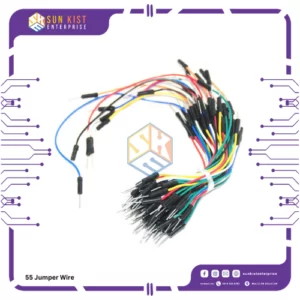Description
A “Module Laser” typically refers to a laser module or laser diode module used for various applications, including laser pointers, laser engraving, laser cutting, alignment, and more. Laser modules are designed to produce a visible or invisible laser beam, depending on their specific purpose. Here are some key features and information about laser modules:
1. **Laser Diode:** A laser module contains a laser diode at its core. The laser diode is the semiconductor device that generates coherent light through the process of stimulated emission.
2. **Laser Wavelength:** Laser modules are available in different wavelengths, depending on the intended application. Common laser colors include red, green, blue, and infrared. The wavelength determines the color of the laser light.
3. **Power Output:** Laser modules come in various power ratings, which determine the laser’s brightness and range. Power is measured in milliwatts (mW) or watts (W), depending on the application.
4. **Operating Voltage:** Laser modules typically operate on low voltages and require a power supply that matches the diode’s specifications. It’s crucial to use the correct voltage to avoid damaging the laser.
5. **Beam Characteristics:** Laser modules can produce various beam characteristics, including spot, line, cross, or other patterns, depending on the optics and lenses integrated into the module.
6. **Focus Adjustment:** Some laser modules have a focus adjustment feature that allows users to control the laser beam’s focal point, enabling applications like engraving or cutting.
7. **Safety Precautions:** Laser modules should be used with caution, and safety goggles appropriate for the laser wavelength should be worn when working with high-power lasers. Direct exposure to laser light can be harmful to the eyes and skin.
8. **Applications:** Laser modules are used in a wide range of applications, including laser pointers, laser show systems, laser engraving machines, laser levelers, laser rangefinders, and more.
9. **Laser Classes:** Laser modules are classified into various laser safety classes (e.g., Class I, II, IIIa, IIIb, IV) based on their potential risks. Users should be aware of the laser class and associated safety precautions.
10. **Mounting and Housing:** Laser modules are often housed in a protective casing, making them easy to mount or integrate into various systems.
11. **Regulations:** Depending on your location, there may be regulations governing the use of lasers, especially high-power lasers. It’s essential to comply with local regulations when using laser modules.
Laser modules are versatile components with numerous practical applications in fields such as optics, electronics, surveying, and more. When working with laser modules, it’s crucial to adhere to safety guidelines and ensure responsible use, particularly when dealing with high-power lasers. Laser safety glasses specific to the laser’s wavelength and power level should be worn to protect against accidental exposure.












Reviews
There are no reviews yet.